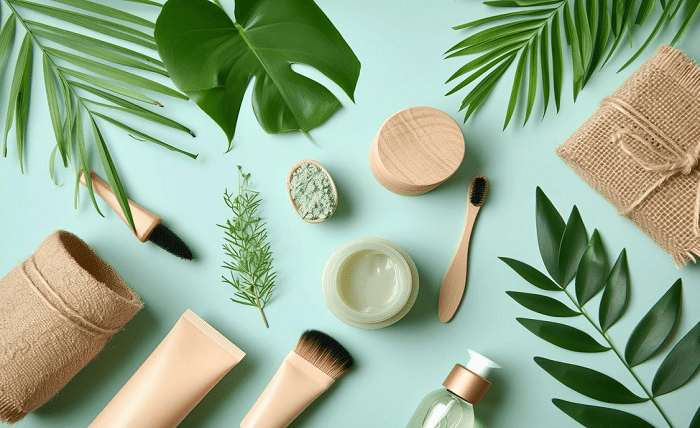In the deodorant market, brands must not only ensure that the container is practical, but also that it reflects their values and aesthetics. Schmidt’s Naturals, for example, is a vegan and cruelty-free brand that uses recycled plastic containers for its natural deodorant. This is in line with the brand mission, but also to ensure that the product durable and easy to use ‌.
Take a look at the brand Native, which is getting a lot of attention for offering eco-friendly cardboard deodorant containers. These containers not only reduce waste by composting, but also maintain the stylish, minimalist design that customers love. Native’s investment in sustainable containers not only appeals to environmentally conscious buyers, but also stands out in a highly competitive market ‌.
Speaking of delivery, it’s a key part of the buyer experience. You have to make sure the goods get to the customer in good order. Pulp packaging waterproof are now a winning formula for brands that want to combine protection and sustainability. Lush Cosmetics, for example, is famous for its handmade soaps and skincare products. Lush uses moulded fibre pulp packaging to protect fragile products and has added a waterproof coating so that the packaging is more versatile and does not fear spills or moisture during transport ‌.
Then there’s Burt’s Bees, which makes gift sets out of pulp trays. These trays are not only biodegradable, but also waterproof, ensuring that delicate products such as lip balms and moisturizers are safe and dry. This sustainable packaging not only attracts environmentally conscious customers, but also reduces the ecological footprint.
| Pulp Packaging | Plastic packaging | |
| Definition | Made from plant-based or recycled materials, biodegradable and compostable. | Made from synthetic polymers derived from fossil fuels, non-biodegradable. |
| Advantages | 1.Eco-friendly and sustainable
2.Customizable for various shapes and products 3.Safe and non-toxic for food contact |
1.Highly durable and long-lasting
2.Cost-effective for mass production 3.Lightweight and versatile |
| Disadvantages | 1.Less durable under heavy weight or extreme conditions.
2.High mold cost, economical for mass production |
1.Harmful to the environment, contributing to pollution
2.Difficult and expensive to recycle effectively |
Packaging is not just a container, it is an extension of the brand. With brands like Schmidt’s Naturals, Native, and Burt’s Bees, you can enhance your product image with sustainable and functional packaging. Work with Green Valley to provide deodorant containers bulk and pulp packaging waterproof solutions that exceed customer expectations ‌.
Conclusion
Sustainable packaging has become a crucial element in the deodorant market, enabling brands to merge functionality with environmental responsibility. Companies like Schmidt’s Naturals, Native, and Burt’s Bees demonstrate how innovative packaging solutions, from recycled plastic to waterproof pulp trays, can reduce waste, protect products, and elevate brand identity. By prioritizing eco-friendly packaging, brands not only meet customer expectations but also contribute to a healthier planet. For bulk sustainable solutions, Green Valley offers high-quality deodorant containers and pulp packaging to help brands stay competitive in an evolving market.
FAQs
- Why is sustainable packaging important for deodorant brands?
Sustainable packaging reduces environmental impact, aligns with eco-conscious consumer values, and enhances brand reputation by showcasing a commitment to sustainability. - What are some examples of sustainable deodorant packaging?
Brands like Native use eco-friendly cardboard containers, while Schmidt’s Naturals opts for recycled plastic. Both approaches help reduce waste and appeal to environmentally conscious buyers. - How does pulp packaging benefit brands like Lush and Burt’s Bees?
Pulp packaging is biodegradable, customizable, and can be made waterproof, providing excellent protection for fragile products while maintaining an eco-friendly image. - What are the key differences between pulp and plastic packaging?
Pulp packaging is biodegradable, eco-friendly, and customizable but less durable under extreme conditions. Plastic packaging, on the other hand, is lightweight, cost-effective, and durable but harmful to the environment and difficult to recycle. - How does packaging impact brand image?
Packaging serves as an extension of a brand, reflecting its values and aesthetics. Sustainable and functional packaging can enhance product appeal and attract eco-conscious consumers.


